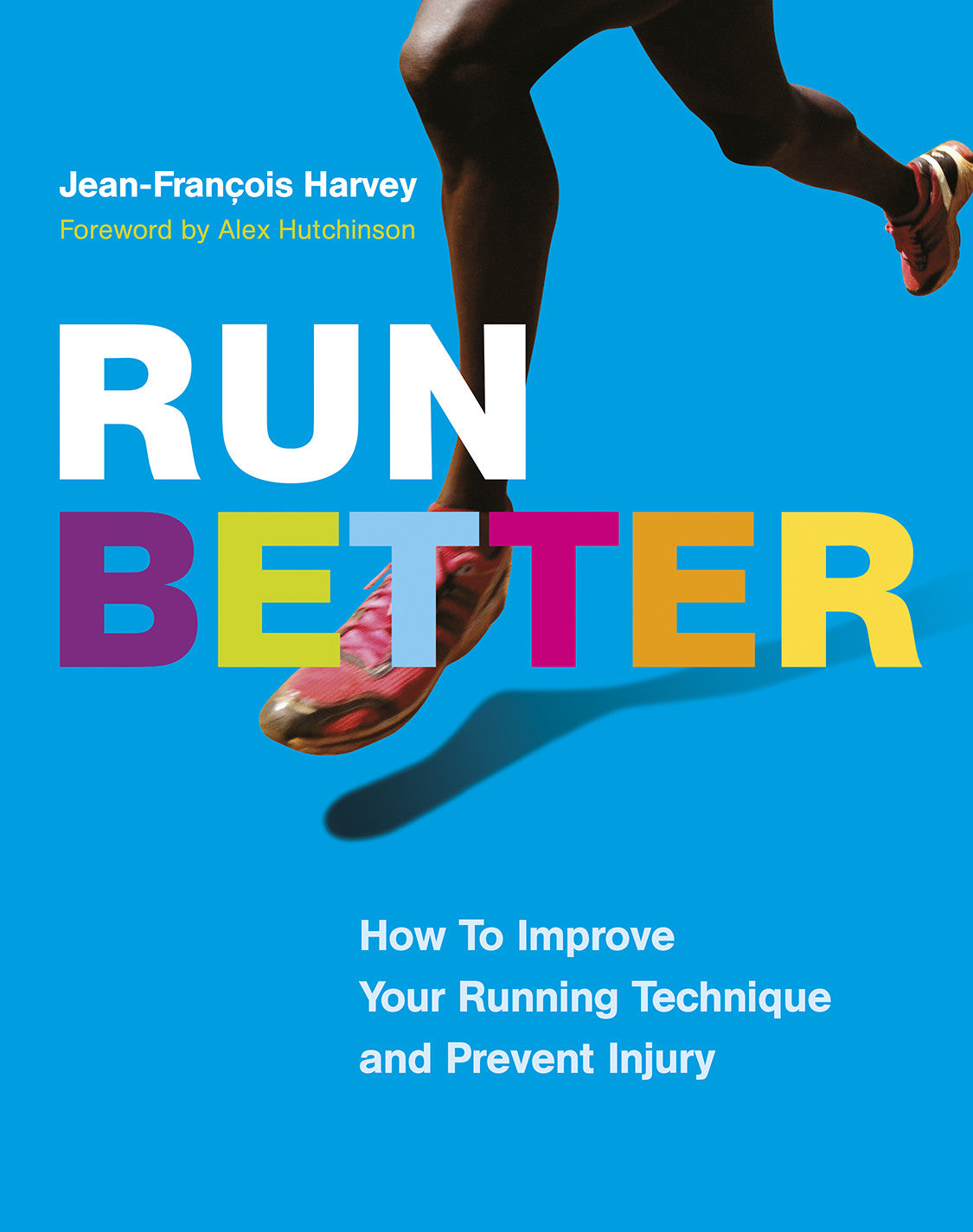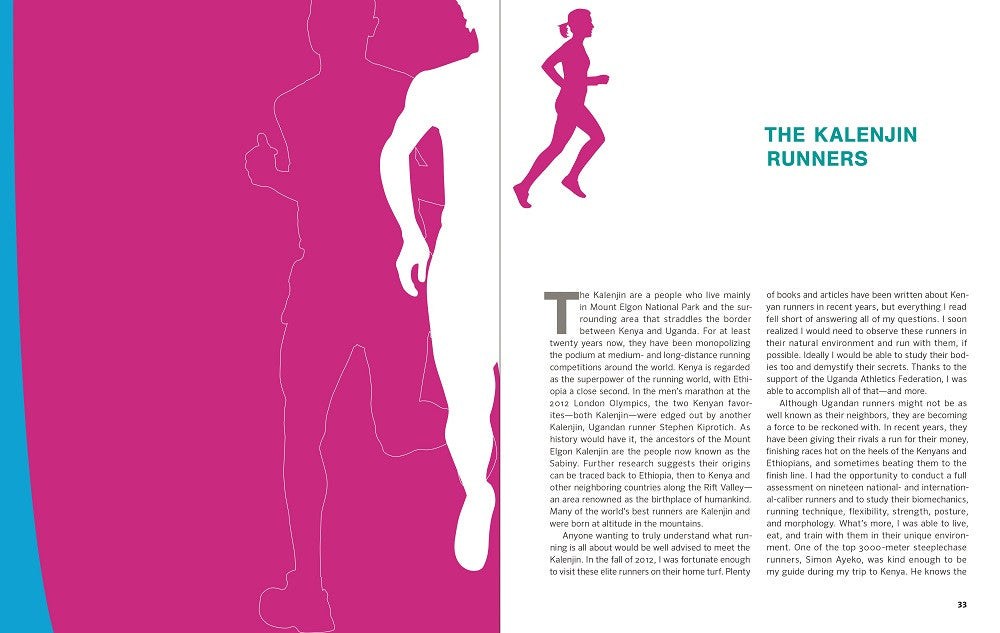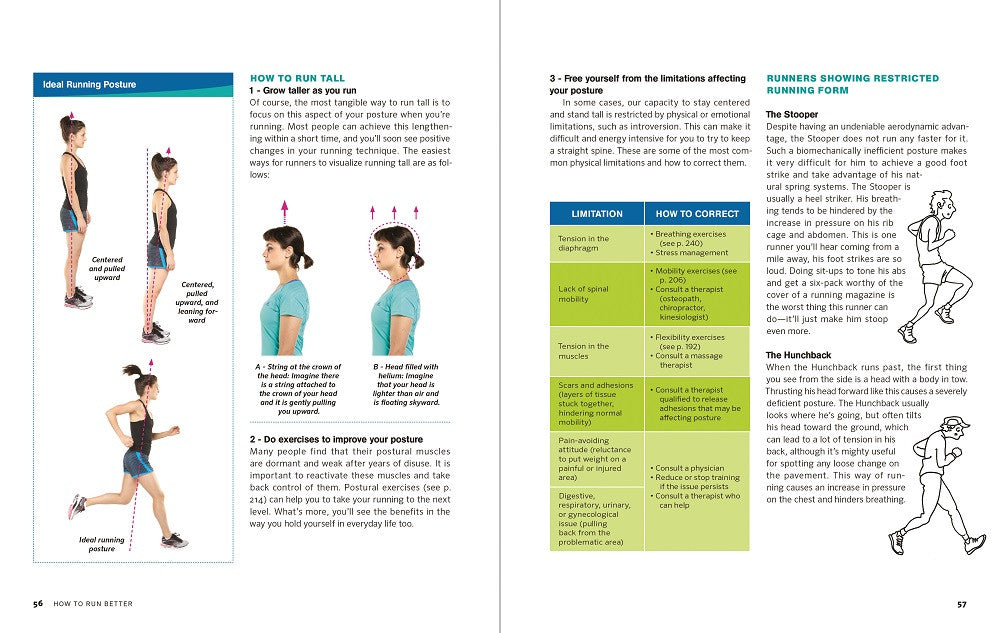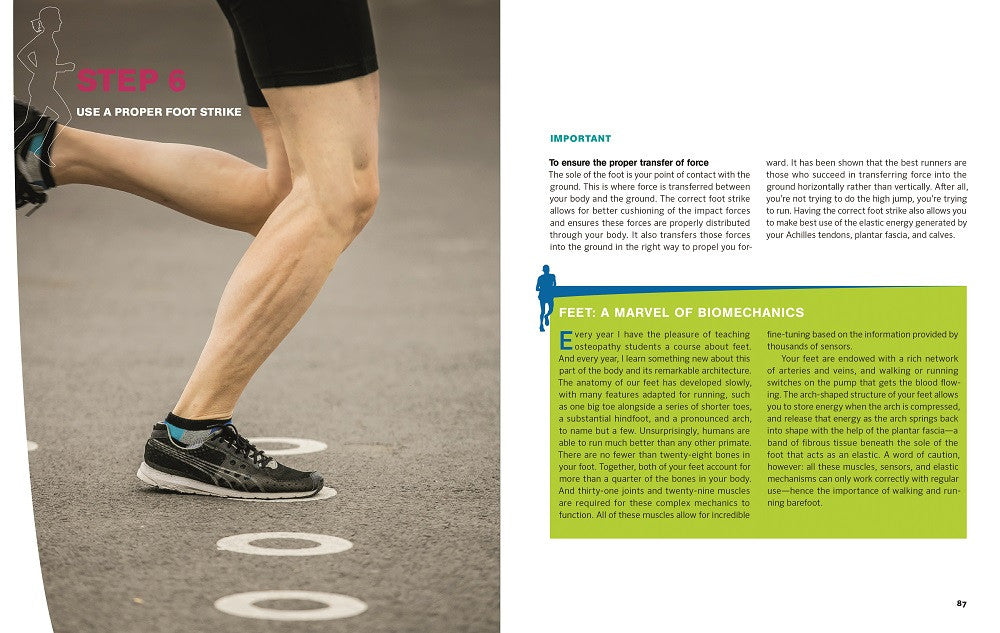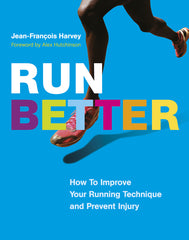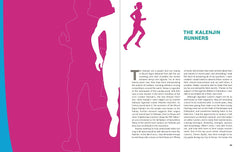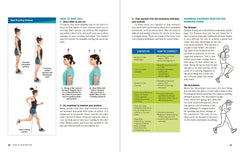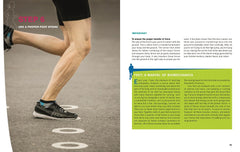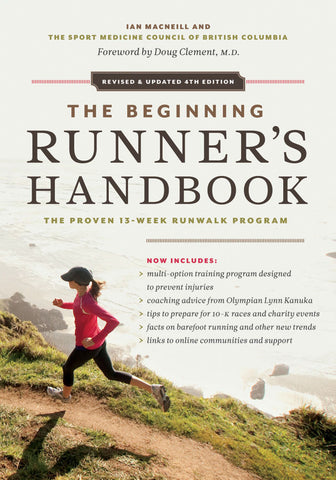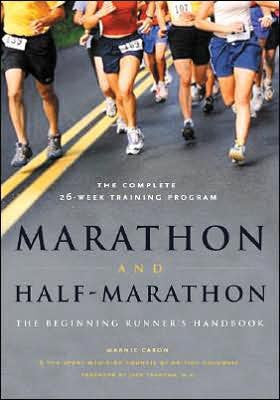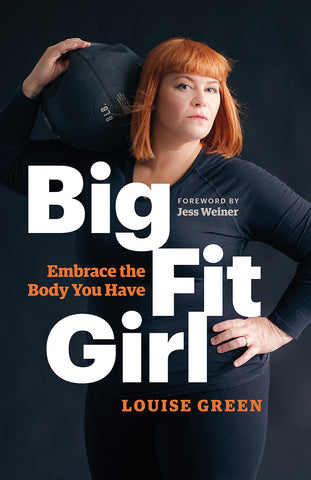Run Better
How To Improve Your Running Technique and Prevent Injury
- ISBN: 9781771642217
- Tags: Alex Hutchinson, Health & Wellness, Jean-François Harvey, Sports & Recreation,
- Dimensions: 7.5 x 9.5
- Published On: 3/25/2017
- 312 Pages
- ISBN:
- Tags: Alex Hutchinson, Health & Wellness, Jean-François Harvey, Sports & Recreation,
A practical, illustrated, and scientifically grounded guide to improving your running technique and preventing injury, written by a kinesiologist.
In North America alone, thirty-seven million people run regularly, and most suffer at least one running-related injury a year. Run Better sets out to help runners of all abilities run smarter and injury-free by
- reviewing the proper mechanics of running and the role of shoes;
- providing training programs (from 5K to marathon distances) that promote rest and cross-training for adequate recovery;
- offering 90 running-specific exercises and technical drills to build strength, reinforce proper posture, encourage flexibility, improve mobility, and optimize breathing;
- explaining 42 common running injuries and the ways to prevent and alleviate them.
Illustrated with more than 150 color photographs, 50 black-and-white line drawings, and 20 charts and tables, Run Better is an easy-to-use and authoritative running handbook for anyone who wants to improve their running efficiency and decrease their risk of injury.
Jean-François Harvey is an athlete, kinesiologist, well-known osteopath, and former coach and is primarily interested in the study of posture and the effects of exercise on the human back. He teaches courses in osteopathy at several colleges and provides training to professionals and the general public. He lives in Montreal, Quebec.
Alex Hutchinson is a columnist at Runner’s World and writes the magazine’s Sweat Science blog about the science of endurance sports. His writing also appears in the Globe and Mail, Outside, the New York Times, and other publications. He competed for the Canadian track and cross-country running teams between 1997 and 2008 and lives in Toronto.
“Run Better is a wonderful guidebook for all runners [...] Everyone could benefit from the thorough information about common running injuries, with the lovely illustrations of stretches and exercises that will help prevent and treat the injuries.”
—Thatprettyrunner.com
From Chapter 1: The Human Side of Running
Humans as a species have a special relationship with running that dates back two million years. By way of comparison, the modern era since the advent of running shoes only began some forty years ago—a tiny drop in that ocean of time at just 0.002 percent of those two million years. Work done by researchers—particularly studies spearheaded by Daniel Lieberman, Professor of Human Evolutionary Biology at Harvard University—is helping us to understand how Homo sapiens came to develop into the species we know today. And it seems highly probable that running played a key role in our evolution. According to the theory of persistence hunting, around two million years ago Homo erectus had to evolve in order to survive in western Africa, where the environment had become hotter and less tree covered.
Our ancestors in the savannah developed a thermoregulation system that allowed them to regulate their body temperature more effectively than the lions, antelopes, buffaloes, and other tough creatures they rubbed shoulders with. This advantage, together with their newfound capacity to run for extended periods (albeit not very quickly), allowed them to hunt their prey to the point of exhaustion. Unlike their prey, they ran no risk of their bodies overheating and did not need to stop to cool down after a while. Thus, Homo erectus was able to survive long before learning to develop weapons such as spears and arrows that would facilitate hunting.
These days, though our chances of being chased by a lion and having to run for hours are slim, our bodies are still designed to run, all the same. We carry within us the story of our evolution. Our bones, our muscles, and our ligaments hold the key to decoding our past as runners. Studies by anatomists have shown that our bodies were shaped by multiple stimuli, including running. We were built to be running machines! Our tibias and femurs are bow shaped, ready to be tensed and released, which helps to propel our bodies forward when we run. Our bones are living and can be shaped by the forces we subject them to. Our Achilles tendons are long, strong, and elastic so they can absorb energy and transform it into propulsion, making every stride more efficient. Thanks to our upright posture we are capable of prolonged running, and this gives us a huge advantage over primates. Once designed for climbing, our feet first evolved for walking and eventually became perfect for running. That’s right. Even without cushioned shoes (more about that later). Over time, our gluteus maximus muscles, the ones that give the curve to our buttocks, developed to improve our forward propulsion. Our legs grew longer and our waistlines more defined. Our shoulders shifted lower and the nuchal ligament that connects our necks to the back of our heads grew stronger. All of these factors can only be explained by the fact that we pushed our capacity to walk farther and farther. Many aspects of our anatomy are the way they are because we ran, and ran, and ran.

